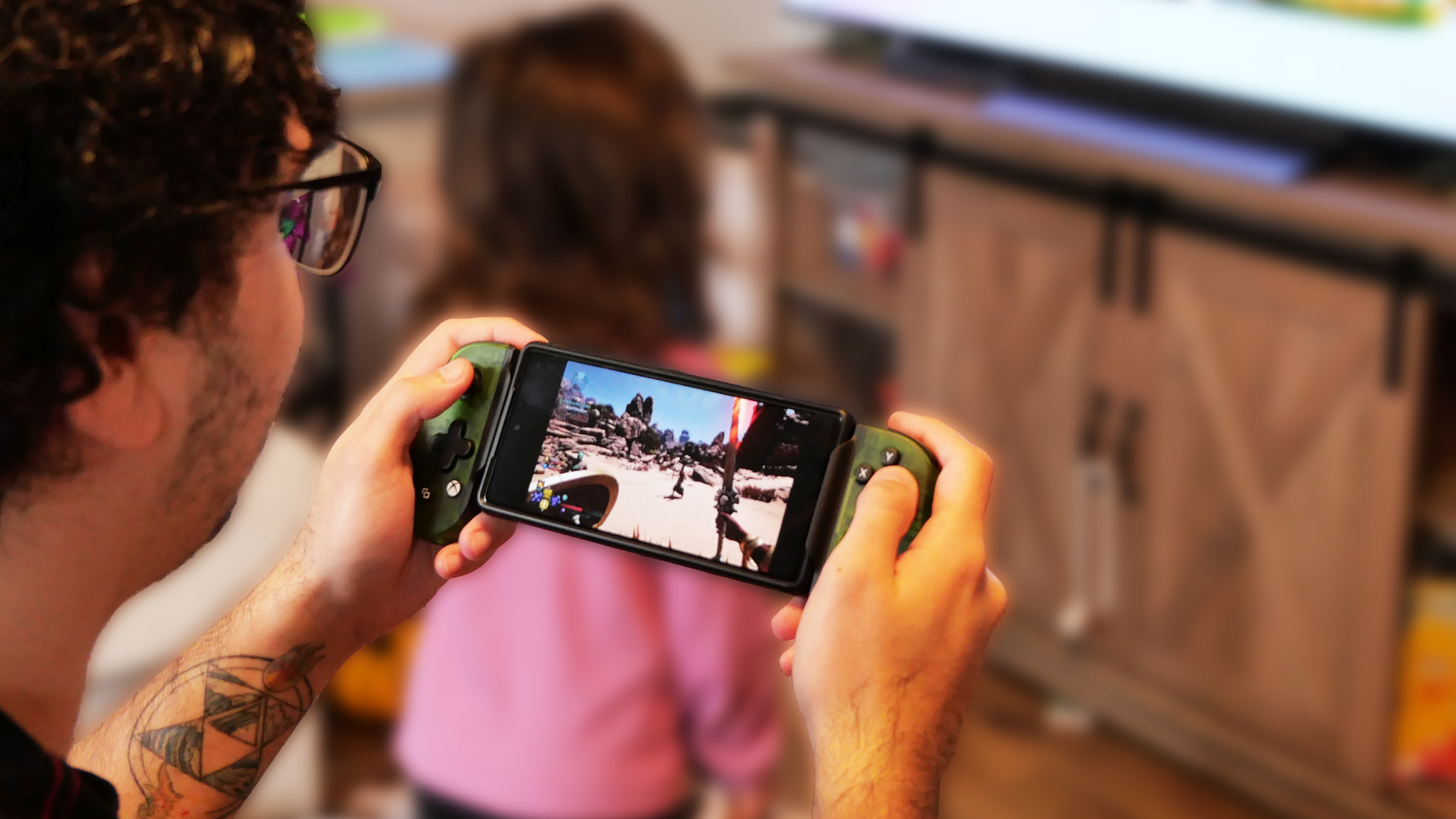Laptop Mag Verdict
The Lofree DOT is a stylish throwback and offers wireless connectivity (a rarity on a mechanical keyboard), but the keyboard prioritizes style over usability.
Pros
- +
Stylish typewriter-inspired design
- +
Bluetooth connectivity on a mechanical keyboard
- +
Impressive battery life
Cons
- -
Awkward key spacing and layout
- -
Limited options for multiple devices
Why you can trust Laptop Mag
True typing enthusiasts know that there's nothing quite like the feel of a mechanical keyboard. If you're using your laptop at home or in the office, it's easy to attach to a USB mechanical keyboard. But if you'd like a wireless keyboard for typing on the go, you usually have to settle for one with cheap plastic keys.
Enter the Lofree DOT, a relatively lightweight Bluetooth keyboard with mechanical Blue switches that have a really clicky feel. A recent Indiegogo darling that's coming to Amazon too, the DOT grabbed attention and funding on the crowdfunding site thanks to it's whimsical typewriter-inspired design and mechanical keys. Right now, you can still preorder the keyboard through Indiegogo for $84, or you can wait for the keyboard to come to Amazon in June for $129.99. But perhaps a more important question is whether you should buy it in the first place: Although its striking, stylized design looks great, the keyboard has real problems when it comes to actually typing.
Design
The Lofree's design is all about nostalgia, with round key caps that emulate those on classic typewriters. Each round key has a spherical, concave top. Larger buttons, like the Enter and Shift keys, merge two round buttons together into a figure-eight shape. The result looks like something off of an old Smith Corona typewriter.
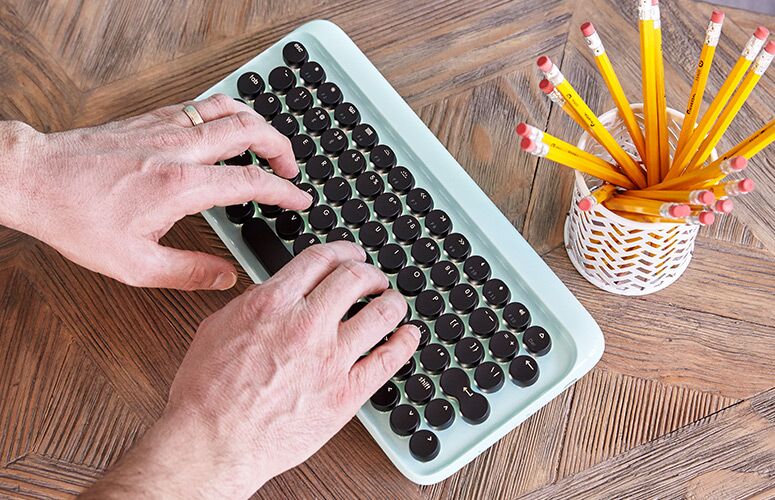
To emulate the sound and feel of an old typewriter, the Lofree uses Gateron Blue key switches, which offer both audible and tactile feedback with each keystroke. Like the popular Cherry MX Blue switches used in many mechanical keyboards, these switches feature a high actuation weight, a tactile bump mid-keystroke, and an audible click. They are the perfect choice for this product because they provide the closest feeling you can get to typing on a typewriter. Mechanical keyboard users prize these springy switches for their comfortable feel and feedback, and the switches provide far more depth and comfort than the low-travel tile keys found on the Apple Magic Keyboard.
The color options are also a blend of modern design and throwback stylings, with two-toned color schemes such as white, turquoise or red with black keys, or a more subdued-looking black-on-black option. Both the round keys and body are plastic, but thanks to a hefty weight and four rubber feet, the keyboard doesn't feel cheap, and it stays put while you're typing.
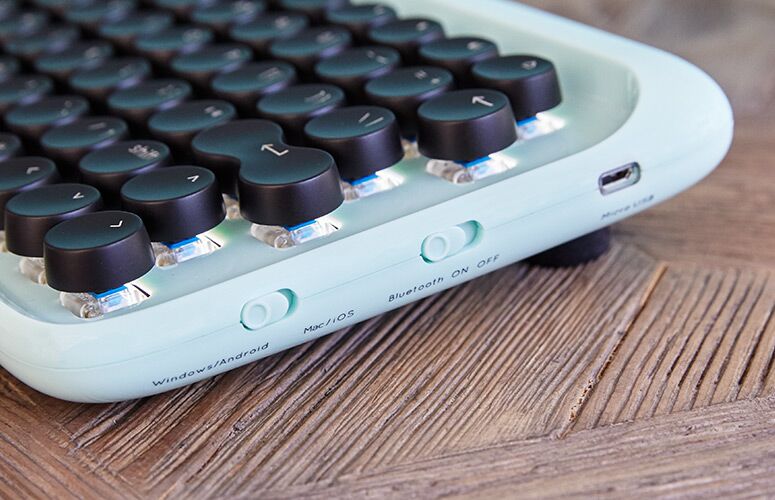
The Lofree DOT is a Mac keyboard first, so the layout includes the Command and Option keys that Apple users will be familiar with. Slider switches on the side of the keyboard let you turn the keyboard on and off and switch between Mac and Windows layouts, while a micro-USB port is used to charge the keyboard.
Setup and Features
The keyboard is meant to be used with multiple devices, and you can switch between Mac/iOS and Android/Windows options with the switch on the side. Pairing the keyboard to a MacBook Pro via Bluetooth was simple. The keyboard comes with a quick-start guide that walks you through the process. You can use a key combo to activate pairing mode, but everything else requires a couple of mouse clicks.
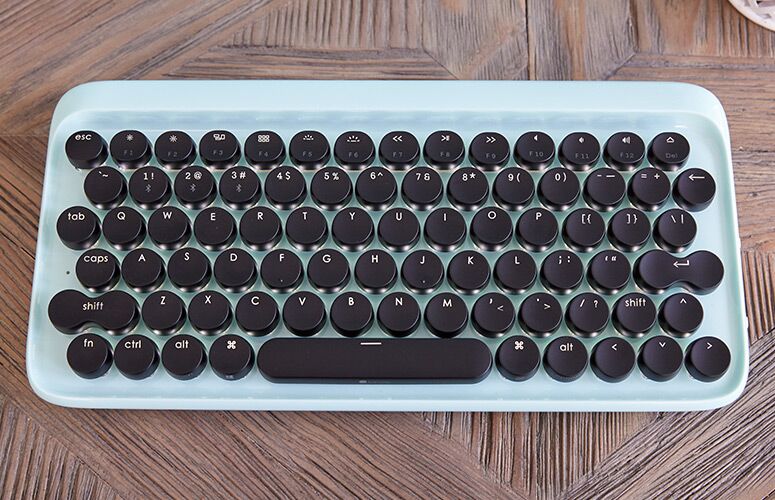
By switching between Mac/iOS and Windows/Android, and between wired and wireless modes, you can pair up to three devices (one wired, one Apple via Bluetooth, and one Windows/Android via Bluetooth), but the process is nowhere near as flexible and seamless as you'll see on more popular keyboards, like the Logitech Bluetooth Multi-Device Keyboard K480.
The keys have built-in backlighting, with glowing lettering on each key. The keycaps are made with a two layer process called double-shot moulding, which uses translucent plastic for the lettering, but opaque black plastic for the rest of the cap. As a result, the lettering won't wear off, and it lets the backlight glow through each letter. Moreover, the backlighting is adjustable, letting you cycle through three brightness levels to find the right lighting for your circumstances.
Performance
The mere presence of mechanical key switches means that the keyboard offers a level of comfort and travel with each keystroke that Apple's Magic Keyboard can't match. The Gateron Blue switches have a delightfully clicky feel and clacking keystrokes. It emulates the feel and sound of a typewriter, and for some folks, that's reason enough to buy it.
When I tested the keyboard on TypingTest.com,my typing speed was reduced significantly, dropping from around 80 words per minute to an abysmal 48 wpm, with numerous errors. The longer I used the keyboard, the more I found myself noticing weird problems that arose from the distinctive design.
With the identical round keys tightly packed into a honeycomb design, it's maddeningly easy to hit adjacent keys while typing. The round key caps make almost every key -- even the modifier keys, such as Caps Lock -- identical in look and feel. The few distinctions aren't particularly helpful, such as a convex Esc key and a red Delete key.
The Enter key and the left Shift key try to keep the rounded-key design while still offering a traditional elongated shape, but the resulting figure-eight shape of two round keys joined together makes the key difficult to press. The right Shift key isn't elongated at all, and it's tucked into the corner with the arrow keys, which have offset up- and down-arrow keys. The whole typing experience winds up being more frustrating than useful.
Battery Life
The company claims that the battery will last for up to 15 months on a single charge. However, we haven't had the keyboard long enough to test that claim. Note that the 15-month claim applies only to functional use of Bluetooth, with the backlight off. Any of the keyboard's three levels of brightness will drop the battery life considerably.
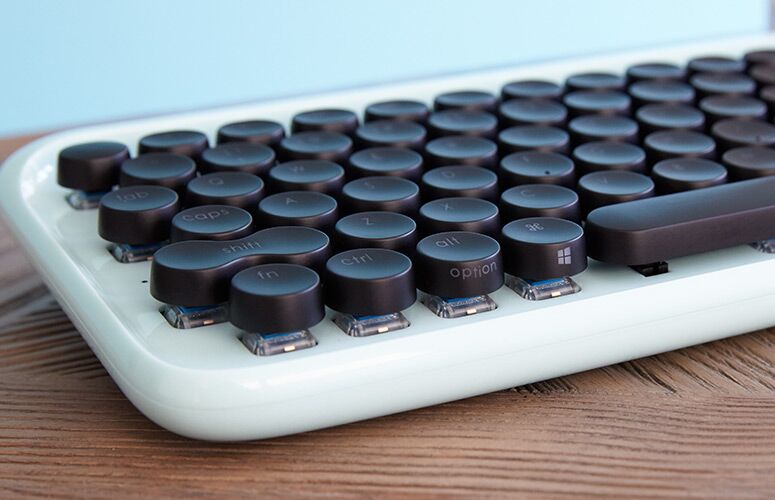
At the lowest brightness setting (40 percent brightness), the time drops to 1,584 hours of use, which works out to 66 days. At 70% brightness that drops to 42 days, and full brightness drops it to 30. One month of continuous use between charging isn't bad at all for a Bluetooth keyboard, but it's more than a year less than the 15 months that's touted most.
Using the keyboard in wired mode with the accompanying USB-to-micro-USB cable will recharge the battery or will just let you use it indefinitely as a wired peripheral.
Bottom Line
Although the Lofree DOT will draw appreciative eyes and jealous fingers, this is one typewriter mimic to pass on. The look of the keyboard is fantastic, but the actual functionality isn't very good. If you're likely to use your keyboard for anything beyond pecking out a tweet or a Facebook update, you'll want a better typing experience. The good news is that there are several great mechanical keyboards on the market that offer the clicky keys and rat-a-tat sound of an old Selectric. For example, if you don't need Bluetooth connectivity, check out the Das Keyboard 4 Ultimate or the Unicomp Ultra Classic, two well regarded mechanical keyboards.
The bad news is that there aren't any good mechanical keyboards that also offer Bluetooth. The Lofree DOT could have been the product to fill that niche, but its nostalgia-drenched design gets in the way.
Image Credit: Jeremy Lips/Laptop Mag
- Amazon Kindle Keyboard 3G: Full Review
- Brydge 12.3 Keyboard Review: Full Review
- Logitech Keyboard Folio for iPad: Full Review
Lofree DOT Keyboard Specs
| Accessories Type | Laptop Accessories, Bluetooth Device |
| Battery Type/Life | 4,000mAh Li-ion Rechargeable Battery |
| Brand | lofree |
| Company Website | http://www.lofree.co/ |
| Size | 296.6 x 144.5 x 30.6mm |
| Weight | About 800g |
